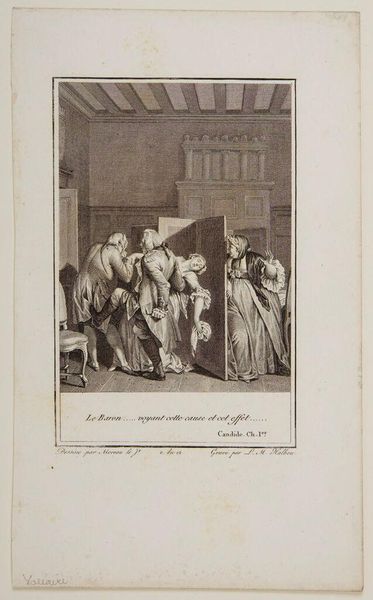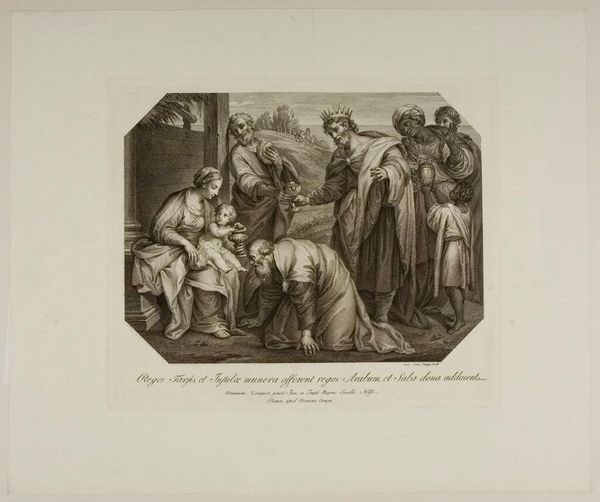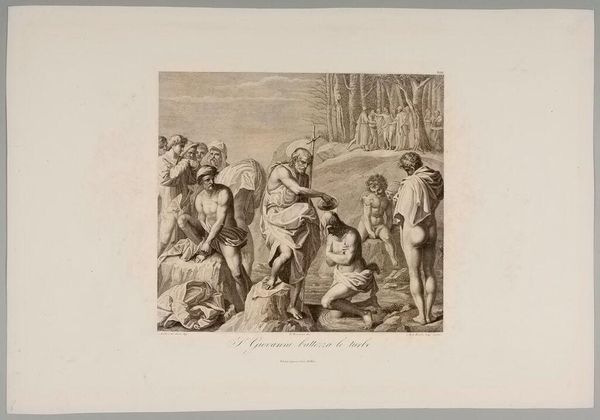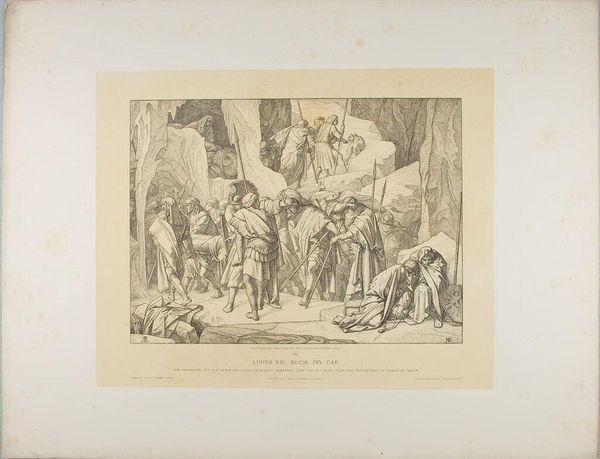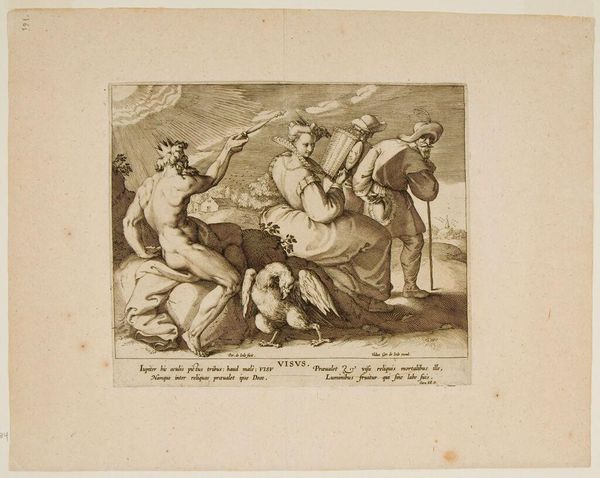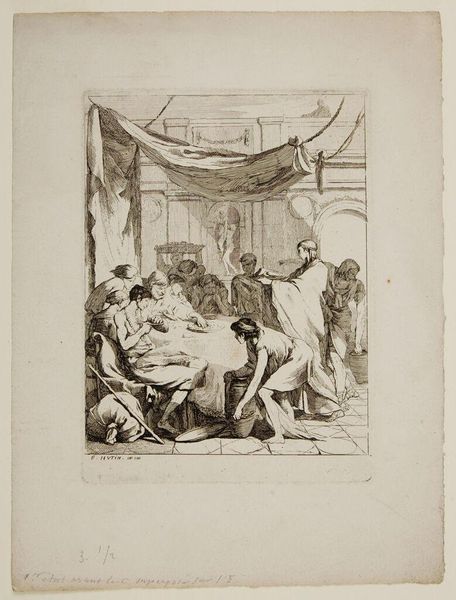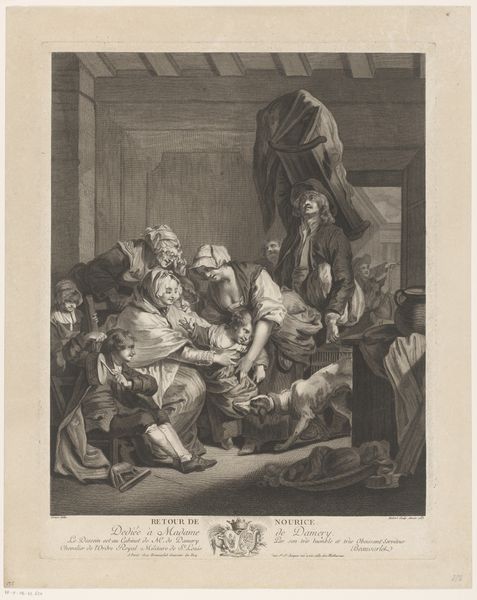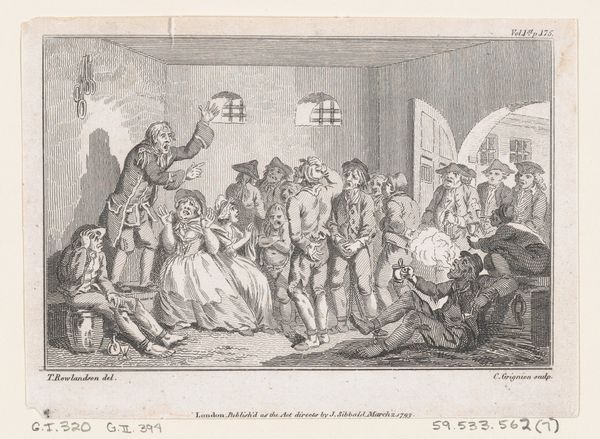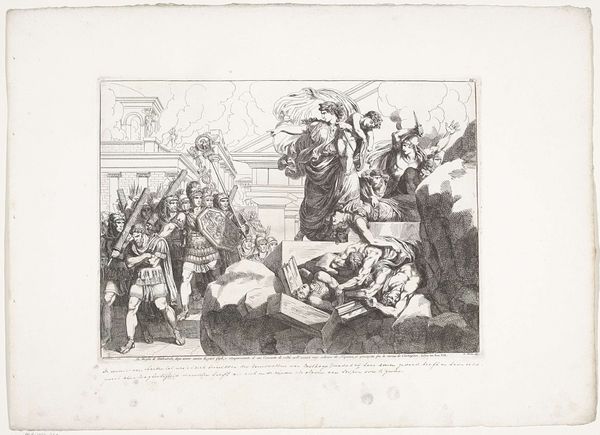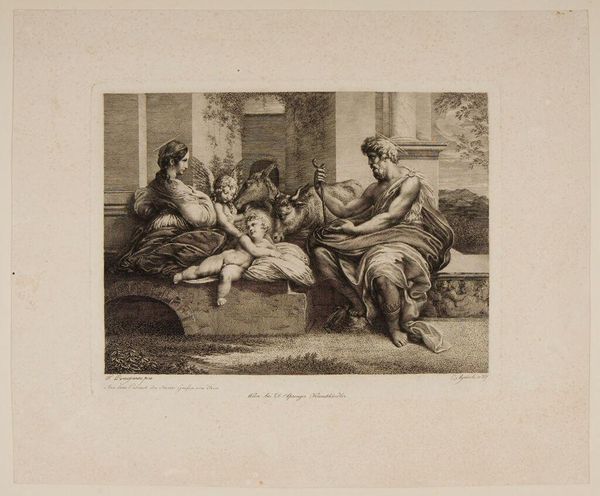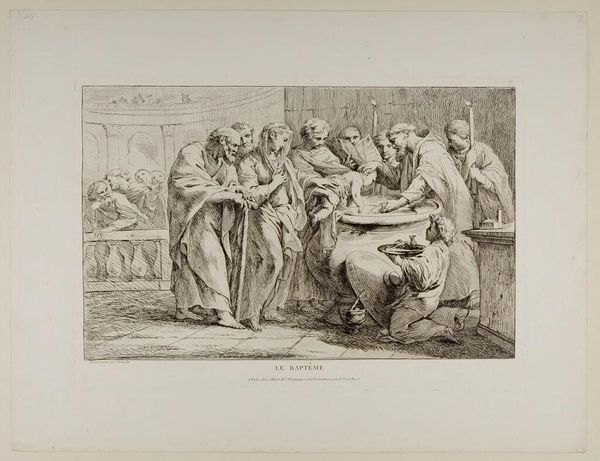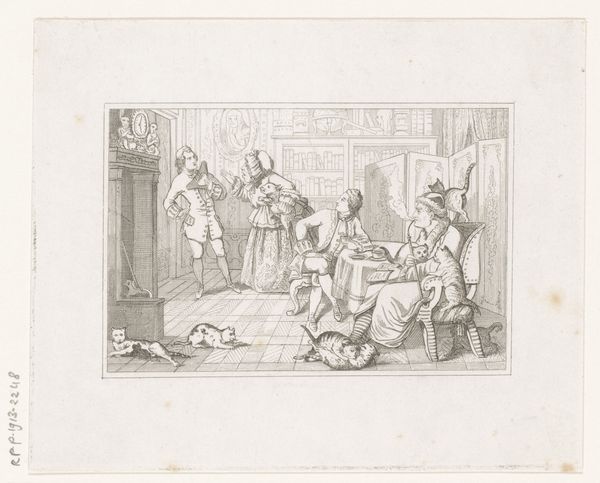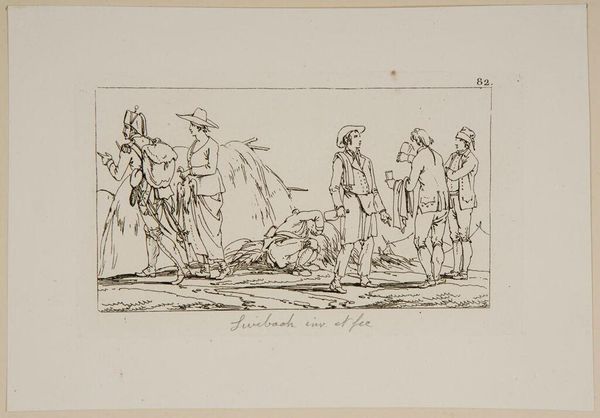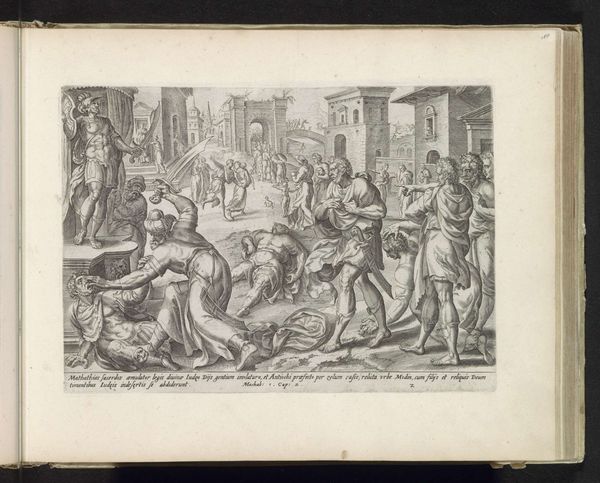
Copyright: CC0 1.0
Curator: Auguste Raffet's print, "The Incurables: They Alone Understood the Revolution," immediately strikes me with its unsettling depiction of physical disability. There's something deeply confrontational about its gaze. Editor: Yes, and the way Raffet presents these figures is quite telling. I see a critique of power structures, perhaps a statement on the marginalization of certain bodies within revolutionary narratives. Curator: The historical context is key. This was published during a period of immense social upheaval in France. How might these "incurables" reflect a broader societal unease or disillusionment? Editor: They are rendered almost monstrously, reflecting a fear of societal breakdown. This imagery really underscores the Revolution's failures to fully realize its ideals of equality and inclusion. Curator: Indeed. The very title positions them as uniquely insightful. Their exclusion becomes a form of radical understanding, a potent commentary on who gets to define historical narratives. Editor: It's a challenging piece, forcing us to confront uncomfortable truths about revolution, disability, and the power dynamics embedded in visual representation. Curator: A powerful reminder that revolutions are rarely universally beneficial, and the "incurable" wounds of history often linger. Editor: Absolutely, and that art can give a voice to those left out of the dominant story.
Comments
No comments
Be the first to comment and join the conversation on the ultimate creative platform.
